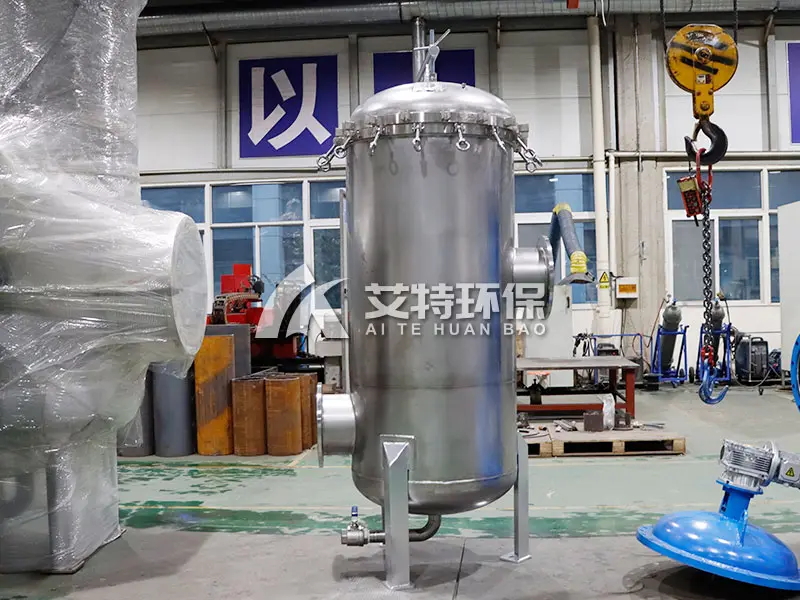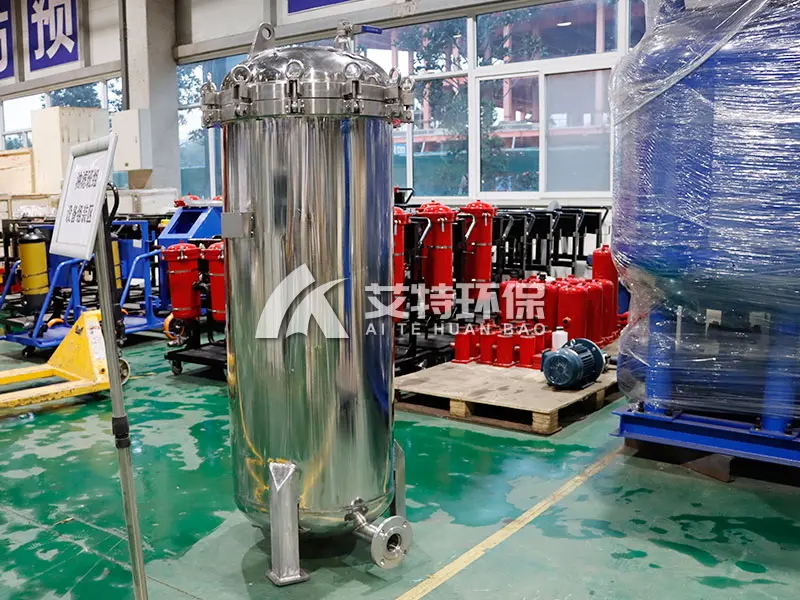When the reverse osmosis equipment is running, the design of the system is not perfect or the strict control is not implemented, which will lead to the occurrence of membrane fouling. As a result, the pressure difference of the reverse osmosis security filter rises rapidly, the filter element is replaced frequently, and the normal operation of the equipment is disturbed, resulting in economic losses.

The inside of the filter element of the security filter of the reverse osmosis system is a skeleton layer, which plays a supporting role; the outside is a net pocket, which acts as a fixed folded filter membrane; in the middle is a 3-layer filter membrane, which plays the main filtering role. The pore size of the membrane is larger. The water flow filtration direction of the security filter is from the outside to the inside. When the pressure difference between the inlet and outlet of the security filter exceeds 0.1MPa, all the filter elements need to be replaced, and they cannot be reused. They are disposable consumables.

First,Frequent fouling and blocking of reverse osmosis security filter elements
The first phase of reverse osmosis uses two water sources, groundwater and reclaimed water. The recent upward trend of reverse osmosis pressure difference is obvious, especially the rise rate of reverse osmosis security filter pressure difference has accelerated, and the filter element needs to be replaced frequently. Sometimes in less than a week, the pressure difference of the security filter rises to more than 0.1MPa, and only the filter element can be replaced. The appearance of the replaced filter element is slightly dark black. Due to the timely replacement, the skeleton is not deformed; the disassembled filter element is inspected and found that a thick layer of sediment is attached to the middle layer filter membrane, and there is a little more sediment at the folds, and the physical characteristics of the sediment are black. , Slightly greasy, odorless, easy to scrape off the surface of the filter membrane.
It is judged that because the filter membrane of the middle layer of the security filter element retains a large amount of solid particles and impurities, the water flux of the security filter decreases and the pressure difference between the inlet and outlet increases, which greatly shortens the replacement cycle of the filter element.

Second,Analysis of the causes of frequent fouling and blocking of security filter elements
1. Analysis of the liquid added to the reverse osmosis system
Scale inhibitor, sodium bisulfite reducing agent, etc. are added before the security filter of the reverse osmosis system. The scale inhibitor is added in the original solution, and there is no chance of contamination by foreign impurities. The sodium bisulfite used is of analytical grade. It is prepared from demineralized water into a 5% solution and added to the system after being lifted by a metering pump. However, no solid particle pollutants were found when cleaning the bottom of the medicine box.
2. Analysis of influent water quality of reverse osmosis system
The operating conditions of the reverse osmosis system require that the turbidity of the influent water should be <0.1NTU and SDI<3. It is unclear whether the influent water quality meets the requirements for reverse osmosis operation. It is inconvenient for the timeliness of chemical supervision, and there is a lag and delay in finding and solving problems, which brings inconvenience to the next analysis.
3. Analysis of reverse osmosis incoming water pretreatment
The pretreatment of reverse osmosis incoming water is particularly important. Problems with the pretreatment filter and changes in the quality of the raw water will cause the security filter to block faster. During the operation of the water purification system, each treatment link must be observed to find out Problems are dealt with in a timely manner. The first-stage water treatment uses the second-stage clean water as the main water supply source. The clean water is the water source after the urban reclaimed water has been treated by the ultrafiltration pretreatment equipment. It directly threatens the influent water quality of reverse osmosis and affects the service life of the security filter.

Third,Analysis of countermeasures for reverse osmosis
1. The reverse osmosis water supply system is complex, and there is a threat of mutual channeling between different water systems. (1) Cut off the desulfurization and chemical connection systems to prevent the first-stage desulfurization sewage from entering the water supply system. (2) Close the relevant valves of J002, J005 and S045 in the centralized pump house to prevent the open source water from entering the reverse osmosis water supply system, and strengthen the operation supervision and inspection.
2. The first-phase water treatment is equipped with a pollution index monitoring device, which is convenient to monitor the changes of the inlet water quality at any time.
3. Strengthen the supervision and maintenance of the first-stage pretreatment equipment and the outlet turbidity supervision of the second-stage pretreatment equipment to ensure that the water supply source is qualified.
4. In the second phase, strengthen the supervision of the incoming water quality of the reclaimed water, prevent the sudden change of the incoming water source, and ensure the influent quality of the ultrafiltration equipment.
5. Purchasing personnel ensure that the material of the security filter element conforms to national standards and industry requirements.
6. The dosage of reverse osmosis inlet should be strictly controlled to avoid excessive dosage, resulting in residues attached to the surface of the filter element, becoming a breeding ground for microorganisms and affecting the service life of the filter element.

Previous article: What is the reason for the large pressure difference in the operation of the security filter?
Next article:How does a fiber ball filter work?